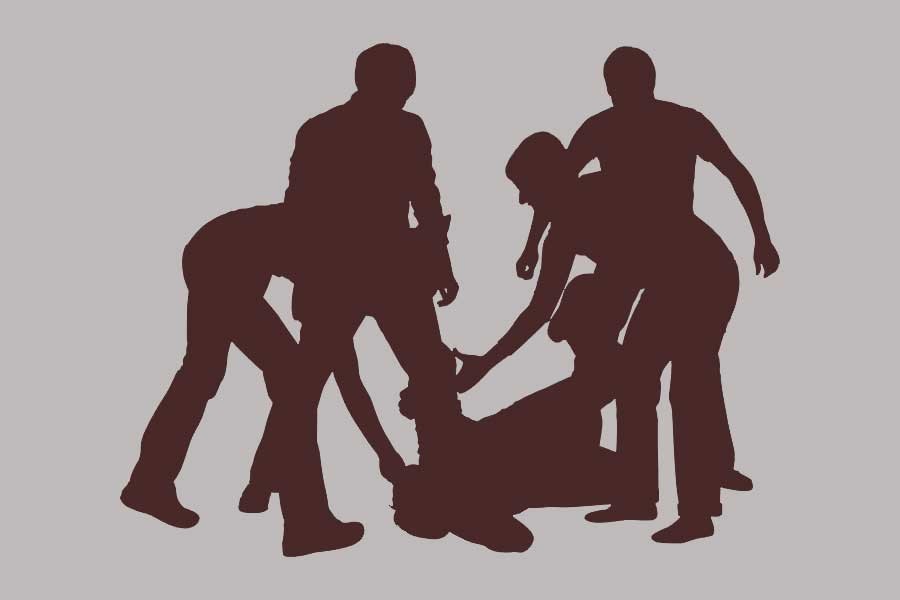Haaturia kil, or punching by sellers and buyers of haat (weekly bazar), was a colloquial expression in Bangladesh's central part, which proved a cruel culture of the previous century.
Not necessarily would a pickpocket, if caught, be beaten mercilessly by a crowd but a scapegoat or even an innocent man might have been victim of mob attack out of suspicion and misunderstanding. Onlookers had often had a smile on their lips as if they watched a fixed wrestling match!
Some ill-fated people had to bear the scars of haaturia kil throughout their life and some incidents made the parties enemies for generations in the rural areas.
With the spread of education and increasing economic well-being, such belligerent culture was supposed to have withered away from society.
The country's print media had in the past 3-4 decades published news items with titles such as 'suspected snatchers beaten to death' and' alleged human traffickers killed'. Some reports called the attackers of such incidents as 'angry mob' as if there could be cool character of mobs elsewhere had there been different atmosphere. A report headlined 'Body of crossfire victim recovered…' was also common.
Once there were criticisms and protests against the extrajudicial killings. But we have seen changes in patterns with one kind of discretionary attack replaced by another like metamorphosis of the coronavirus. As society moves to the next level, the residue of the haaturia kil remains.
Cricketer Liton Das or his captain Mahmudullah Riad understands what it feels like when thousands from social media sites had thrown their punches at them. Commentator Harsha Bhogle had once asked batting great Saeed Anwar how cricketers of the subcontinent negotiated with trauma when their homes came under mob attack about two decades ago. Anwar blamed poverty and people's extreme passion for cricket for their unruly behaviour.
Poverty has come down in all these South Asian countries but mob attacks, not just over losses in cricket matches, have not come down to zero.
More attacks and counter attacks are now visible on a virtual world without humans. Human bloods are instigated by activities outside their physical world apparently to take more bloods.
The reason for recent mob attack on minority houses in a number of places in the country, in repercussion to alleged desecration of the holy Quran at a temple, is not understandable to a rational person. The attackers might never be able to say how they had upheld people's religious freedom the way great gatherings asserted human rights throughout the history.
A new reader would wonder if they are aware of the message of the holy book:"O ye who believe! If a wicked person comes to you with any news, ascertain the truth, lest ye harm people unwittingly, and afterwards become full of repentance for what ye have done." [Surah Hujurat, Ayat 6]
Attacks on unarmed, innocent people aren't justified by any sacred writings. Regrettably, the motive of artificially creating public anger would remain unknown until it is exposed somehow. Such attacks can partially be explained by the whims of crazy souls at their moment of madness.
The new individuals of the old haat are active on the tech platforms with some pouring venom on the virtual walls. Quarrels are the immediate consequence. Only a few of the 'quarrels' (please read attacks) have spilt over to villages in Cumilla and towns, be it Washington DC or New Delhi, while many others are planted like time bombs.
Some are concerned about the risks of today and tomorrow but it's hard to differentiate sublime arguments from the dominance of abusive words, let alone fighting for the righteous causes.
Is the world waiting for the social media mob to calm down through loss of energy or is it the job of the leaders of all sectors to restore the culture of floating great ideas socially?


